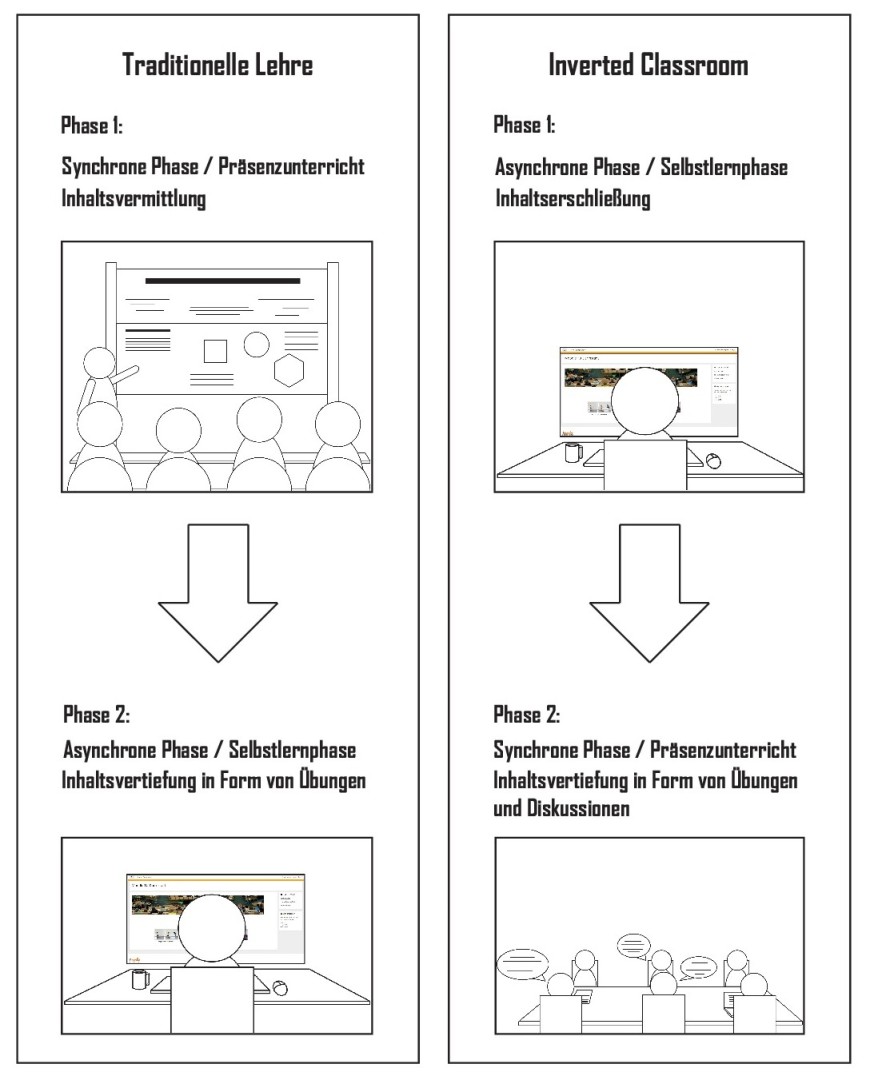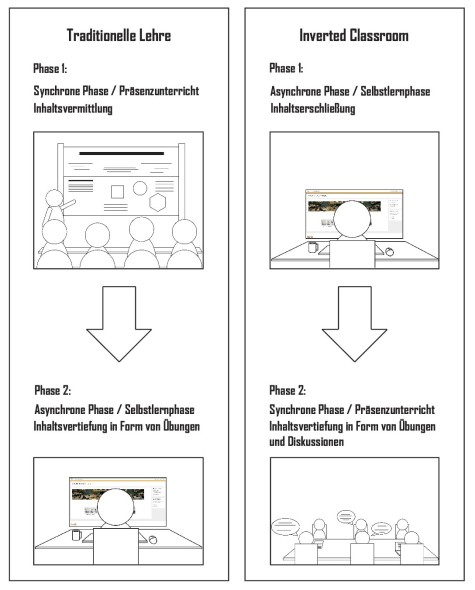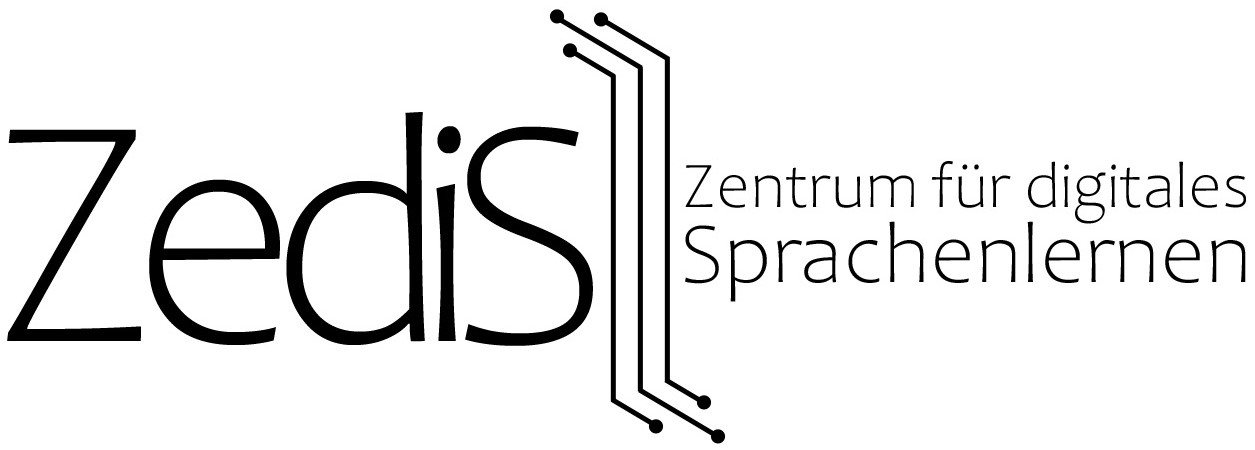In this form of instruction, the typical teaching phases are reversed, as the term “inverted” indicates. Whereas course material is typically discussed during class, followed by a short question and answer session and individual exercises, the acquired knowledge is usually only implemented in greater depth in homework assignments. In the inverted classroom, student encounter and engage with the content prior in class. In turn, classroom time is used for questions as well as a more in-depth exploration of the content covered in the assignments (cf. Schäfer 2012:3).
Of course, this principle is used in online as well as face-to-face teaching. However, online teaching, given its synchronous and asynchronous phases, has shown that this model is particularly well suited for this instructional form.
In language teaching, there are several scenarios in which this phase shift can be used effectively:
- In reading comprehension courses, this form of instruction makes it possible to focus on content. The students read the texts in advance so that they can be discussed in the course in terms of content. As a result, there is more time for discussion and various tasks related to the text can be completed.
- The situation is similar for grammar topics: In this swapping of instructional phases, students work on grammar topics independently and class time is used to ask questions and complete intensive exercises.
By moving the input to the self-study phase, students can work at their own pace, look up new words, and take advantage of additional offerings (e.g., grammar videos).


Literature:
Schäfer, Anna Maria (2012): Das Inverted Classroom Model, in: Das Inverted Classroom Model. Begleitband zur ersten deutschen ICM-Konferenz, hrsg. von Jürgen Handke, Alexander Sperl, München: Oldenbourg Wissenschaftsverlag, pp. 3-12.

